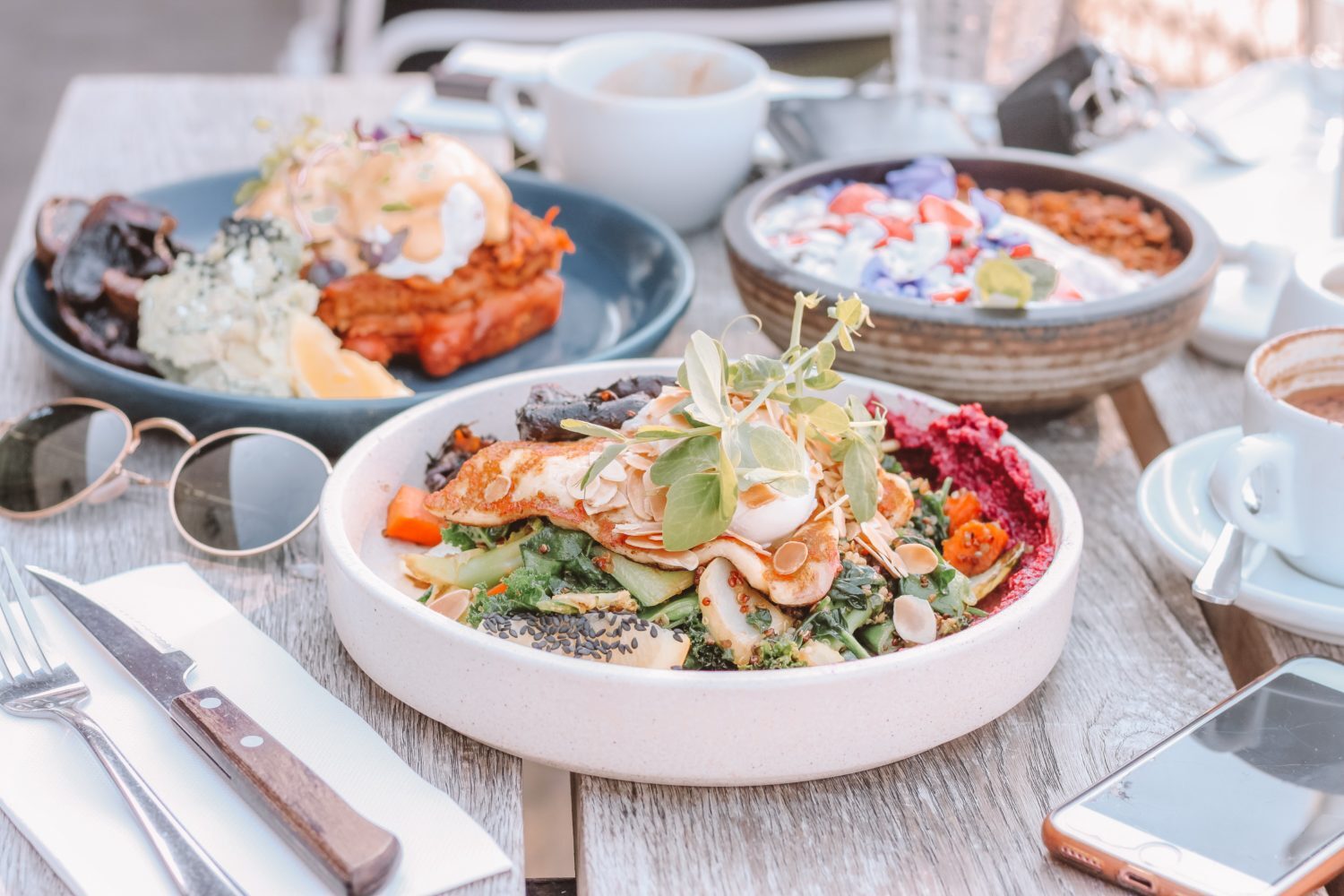What are the new trends in hotel gastronomy and how can domestic hospitality units follow them?
8 mins readEach new year brings changes to restaurant menus. 2020 has brought, perhaps, more adjustments than any researcher could have predicted for the broader sector of hospitality, as coronavirus (COVID-19) is now defining developments. Let alone trends at a time when unrest in the industry is just beginning to become apparent.
However, in the long run, optimism will return to normal, and hotels will be called upon to listen to the needs of their guests in order to recover quickly.
A key step in recouping is the timely preparation of hotels in order to provide new products and experiences that will attract their visitors’ interest. So which are the new trends in hotel gastronomy and how can domestic hospitality units follow them?
Food Delivery – The new trend in hotels that demands zero physical contact during service

Undoubtedly, the COVID-19 pandemic will create a new trend in F&B services related to limited or zero physical contact during service. In this context and in an effort to generate additional hotel revenue, a new trend was formed where various units in China began providing food delivery services to businesses and stores. This trend, which has already made its appearance in China as part of the Chinese New Year celebrations, has been a substantial source of revenue for several hotel chains.
COVID-19 seems to be changing not only businesses but also guests. Researchers claim that the end, or the recession, of the pandemic, will make hotel customers (but also all consumers) look for products related to healthy eating. Hotel restaurants should definitely take this parameter into consideration, as they may need to modify their menus accordingly.
Kimchi & Kombucha: Fermentation products at the heart of food trends for 2020

In the “world of healthy eating”, and before the outbreak of COVID-19, the culinary “futurists” stated with certainty that fermentation products will dominate kitchens in 2020. Although this type of product, such as Kefir, is not a new trend, Kimchi stands out as the most popular of its class for this year.
Kimchi, a staple in Korean cuisine, is a traditional side dish of salted and fermented vegetables, such as napa cabbage and Korean radish, made with a widely varying selection of seasonings including gochugaru, spring onions, garlic, ginger, and jeotgal, etc.
The fad of incorporating fermentation products in the menus seems to be also followed by bars, with Kombucha being used in alcoholic and non-alcoholic beverages. According to experts, catering companies do not have to completely change their catalogs in order to harmonize with this new trend. Just a few additions are enough to help you map out the needs and level of acceptance of these changes by your guests.
Kombucha is produced by adding bacteria and yeast to sugar and black or green tea, which is then left for a while to ferment from these bacteria.
“Alternative” diets are predominant in 2020

The previously “alternative” diets, such as gluten-free, lactose-free, keto, vegan, and others of the same philosophy, are predominant in the culinary industry of 2020. Thus, every menu should integrate dishes of each of the aforementioned categories, in order to satisfy all target-groups. Hotel restaurants that want to follow this multi-dimensional trend of “-free” can choose which dishes to include in their menus based on which food groups they want to appeal to. However, the most essential step in promoting these dishes is to inform your guests before ordering.
This information process begins with the detection by the waiter of any particular dietary preferences and is completed with the corresponding menu suggestions. It is worth noting that even in cases where we serve guests without any dietary preferences, appropriate marketing techniques can motivate them to try a dish of this category. For a complete “sales” process we should not forget to ask our visitors for comments about their taste experience at the end of their meal/dinner. These comments can be very beneficial for the final configuration of our menu.
Levantine Cuisine, one of the most popular international cuisines

Recent research conducted by a large hotel chain highlights the Levantine Cuisine as the dominant trend of 2020 for international cuisines. It is essentially a patchwork of different cuisines from the geographical area of Lebanon, Palestine, Syria, Turkey, Israel, Egypt, and Cyprus. Herbs, spices, nuts, and squeezed lemon juice form the basis of Levantine Cuisine. The culinary experience includes also ingredients such as yogurt, cucumber, chickpeas, tahini, chicken, and fish, which are combined and offered to restaurant guests in many variations of salads, appetizers, or main dishes.
The basic rule for this cuisine is that there are no rules. Nevertheless, its charm is probably “hidden” behind the fact that dishes are smaller in quantity in order for the table attendants to share them in the middle. Representatives of the Levantine Cuisine talk about the meze (with the root of the word in Persian corresponding “maza”). In fact, in Greece, Levantine Cuisine has made its appearance knowing great success.
Sustainability and technology: New smart applications and technologies shape the gastronomy industry

By 2023, researchers estimate that technology will have invaded restaurants for good, in combination with a healthy diet. In fact, several technology companies have entered the process of developing applications that are installed on mobile phones, measuring the rate at which a guest swallows and alerting them by vibration in cases where they have to slow down. Similarly, applications are being developed that track the amount of food thrown away by restaurants in an attempt to sensitize businesses as far are sustainability is concerned. After all, food waste is a global problem, with consumers and businesses being called upon to help solve it. So, it is not uncommon for restaurant visitors to make their final decision on where to dine based on the environmental footprint of each hospitality business.
Useful Advice for Hotels

It becomes clear that hotel customers now want, and, in some cases, demand, of the hotels to be ethical, sustainable, and modern, marking the new operating framework in which hoteliers will have to lean.
The philosophy behind trends is not to follow them and apply them faithfully to your business. Instead, the role of trends is to show you the direction, so that you can incorporate them into your business to the extent that you can support them. For example, if your restaurant menu has a Mediterranean orientation, it is better to include kefir in your recipes and not kimchi.
Tips for Menus

Similarly, you can take advantage of the gluten-free or keto diet trend by adding a few dishes to each category (appetizers, salads, especially desserts) in your food list. But the most important thing is to show this by adding relevant information to your menu, your corporate page, and all your advertising material. For example, you can emphasize to your guests that your hotel restaurant also offers gluten-free or keto dishes. At the same time, you can ask your graphic designer to create special signage in the form of small signs (e.g. “gluten-free”, “good for keto”, etc.) which you will add to the corresponding dishes on your menu next to their description. So, as your guests read the menu, their attention will be driven on the dishes with these special signs. In an effort to enhance the promotion of your specific culinary suggestions do not neglect to properly train your service staff to start by detecting any dietary preferences and making corresponding suggestions. By the same token, you can move on to creating alcoholic and non-alcoholic beverages with special ingredients such as kombucha, which is one of the most popular for 2020.
Tips for a More Sustainable Hotel Character

In addition to the ingredients that you can turn into food and drink suggestions for your restaurant, pay attention to the “responsible” behavior of your business. A good idea is to recycle, manage your waste properly, and try to help your local community. An effective way to support your local community is to staff your business with locals. Quite often this action is “embraced” by the local community which in turn will support you in your operation. You can also start communicating with local producers who are often able to supply you with products quickly and efficiently. Companies that have chosen this path have been justified in the end, by saving resources and strengthening their relationship with the local community.
Let’s not forget that no matter what action you take, you should communicate it correctly and accurately, meaning that the environmentally and community-friendly profile of your business should not be used commercially with aggressive advertising, as it will lose its meaning. On the contrary, word of mouth will bring the desired result. After all, the new conditions that are now emerging, create an environment where businesses are called upon to adopt a social and responsible profile without, of course, neglecting their commercial character.






